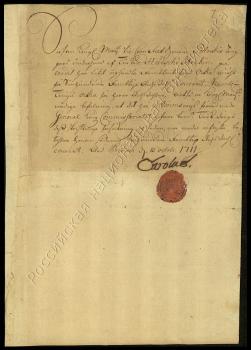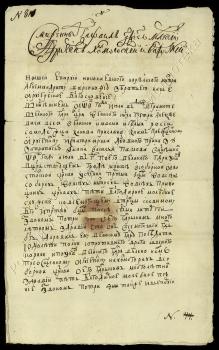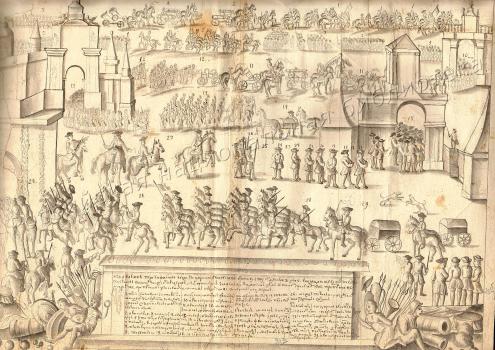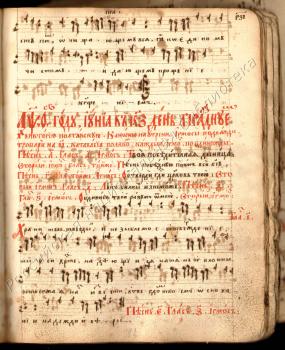"Rejoice, Russia Glorified ... in Battle"
In Celebration of the 300th Anniversary of the Battle of Poltava
The Battle of Poltava, called "the Victory of Poltava" by Tsar Peter the Great, takes its exceptional place in the history of the Great Northern War between Russia and Sweeden.
The Russian victory of 1709 destroyed the myth of invincibility of the Sweeden army under the command of King Charles XII. Events at Poltava were the decisive moment of the Great Northern War and predetermined the outcome of the enduring military opposition between two countries, as well contributed to the transformation from the Tsardom of Moscow to the Rusian Empire.
Our virtual exhibition, devoted to the 300th anniversary of the victory over the enemy, does not set out to be quite comprehensive. We have not tried to provide a detailed view of the events. The display showcases only originals of decrees and appeals, autographs of royal persons, drawings and engravings by contemporaries of the events of three hundred years' prescription. A chronological scope of the exhibition is also limited. Material selected from the Manuscripts Department's collection covers only those events that took place at or near the time of the battle.
Several countries participated in the war. Augustus II the Elector of Saxony, the Russian candidate for the throne of the Polish-Lithuanian Commonwealth (a union of Kingdom of Poland and Grand Duchy of Lithuania), was Russia's ally against Sweden. Supporters of the Swedish candidate Stanislaw I Leszczynski took part on the side of King Charles XII. After the defeat of the Russian forces at Narva in 1700, the theatre of military operations of the Swedish troops spread out on the area of the Polish-Lithuanian Commonwealth and Saxony. The Russian army was also deployed in the Polish-Lithuanian Commonwealth, in the city of Grodno. In the end of 1705, the Swedish offensive eastward forced the Russians to shift troops to the south towards Brest and Kiev. In January, 1706, Charles XII took Grodno that the Russians had left without any fight, but was induced to turn west and lead an attack against Augustus II. A Swedish corps remained in Poland. On 18 October, 1706, the Battle of Kalisz took place, where the Swedish troops suffered a military defeat from the joint Russan-Polish-Saxon forces led by commanders Augustus II and Prince Aleksandr Menshikov. The perfect victory of the Russian army over Swedes at the Battle of Kalisz presaged the Victory of Poltava. Although the Elector of Saxony had fought on the side of the Russians during the battle, but conquests of the Swedish forces in Sacsony compelled him to sign a secret agreement with King Charles XII. By the terms of the treaty, Augustus II abdicated the Polish crown in favor of Stanislaus Leszczynski and broke his alliance with Russia.
After winning the battle, the army under Prince Aleksandr Menshikov moved into winter quarters to Zholkva (the town situated about 20 km north of Lvov). The exhibition demonstrates Aleksandr Menshikov's appeal, addressed to the nobles of the Polish-Lithuanian Commonwealth, which promised a reward of 5 000 or 2 000 thalers per head for any traitor, alive or dead correspondenly, who broke his oath to Peter I. The paper under a red wax seal is written in Polish and contains some Latin phrases, but Prince Aleksandr Menshikov put his autograph in Russian.The year of 1707 passed relatively quietly, Charles XII led a strengthened and rested army to the east. In the early 1708, the Swedes took Grodno and reached Mogilev by autumn. In summer of 1708, a corps under Count Lewenhaupt, the Riga Governor, with a vast baggage train of supplies marched to join the Swedish main forces. But the Swedes were unable to unite. On 28 September, 1708, a mobile detachment under Tsar Peter I intercepted the enemy's column. Serving as the head of the Life Guards Preobrazhensky Regiment, Peter the Great himself participated in the battle. The Manuscripts Department possesses an original decree on the salary payments to bombardiers of the Preobrazhensky Regiment under command of the new corporal Jacov Inekhov with names and signatures of all recruits. The date and place of the signing of this decree were written with Peter the Great's own hand.
This victory of the Russian troops over the Swedish forces at Lesnaya village, called "the Mother of the Battle of Poltava" by Peter the Great, noticeably weaken King Charles XII's military potential. The Swedish army, exhausted with the long march from Grodno to Mogilev, encountered the menace of starvation, since Tsar Peter I withdrawed toward Moscow destroying possible food supplies for the Swedes. Not waiting for Lewenhaupt’s corps, Charles XII suddenly headed south, instead of continuing to move towards Moscow. The Hetman of the Ukrainian Cossacks, Ivan Mazepa promised Charles his support. Ivan Mazepa was an ally of Russia for almost twenty years. The fellow-fighter of Peter I, he aided the Russian tsar in many campains. One of the richest Ukrainian men promoted the region's economic upturn and made an important contribution to the rebuilding and new construction of Orthodox churches and monasteries. In 1707, while visiting the Kiev Monastery of the Caves (Kiev Pechersk Lavra), Ivan Mazepa issued a written order to make the headman of the little town of Korsun Vasily Zhdonovich investigate an affair of water-mills on the Ros' Riva. A complaint obtained by the Hetman was filed by Father Superior of the Vydubitsky Monastery Barlaam Strakhovsky against Yurko Vitel, a monk of the Kiev Monastery of St. Nicholas, who had improperly built a water-mill near the mill of the Vydubitsky Monastery. The Hetman Ivan Mazepa decided to betray Peter and breake his oath to the Russian tsar as early as 1706. When Charles XII invaded into Russia, the hetman established secret contact with the Swedish king. Mazepa stationed Charles's army in winter quarters on an Ukrainian land. He promised to supply the Swedes with food as well as persuade Zaporozhian (the Central Ukrain) and Don Cossacks to flee to Charles's side. Peter had absolutely trusted Mazepa until the hetman with a few thousand followers openly joined the enemy. On 26 October, 1708, an official statement of Mazepa's defection was issued. Next day, it was followed by Tsar Peter I's decree making an appeal to Cossacks of the Zaporozhian Host and the clergy to come immediately to council. On 28 October, the deed of Mazepa's betrayal and the assembly of high-ranking officers of the Host at Glukhov was given to all Ukrainian people and particularly to the Zaporozhian Host. After a week, in his absence, the betrayer was deprived of the title of Hetman, and the ceremony of the execution of capital punishment was held. Next day, Cossacks elected a new hetman, Colonel Ivan Skoropadsky. His two appeals, dating before and after the the time of the Battle of Poltava, are shown at the display. One of them, dating 27 April 1709, was given to Kiev Colonel Danila Solonin. It grantsa right to take an army part of incomes from water-mills on the river Ostra to the Kiev regimental judge Elia Zhil'.
To some degree, appeals, presented here, describe the new hetman as a gentle person loyal to his sovereign. Ivan Skoropadsky wrote the following note on the documents in place of his signature: "Above-named Hetman on his own authoritative hand".
The end of 1708 and the first half of 1709 passed relatively quietly. Troops on opposing sides were disbanded. The Swedish army was distributed through the area of Hadiach, Romny, Pryluky, Lubny. The Russian forces were based eastwards nearby Sumy, Lebedyan, Akhtyrka, protecting a way to Moscow. Using a temporary lull in the fighting, Tsar Peter I remained for the most part in Voronezh, where watched closely the motions of the enemy and told his regiments where to move. A surviving report of Life Guards Lieutenant Colonel Prince Vasily Dolgorukov contains the monarch's decisions at every point, including a disposition instruction.Following Mazepa' advice, Charles XII started to concentrate his troops near Poltava. The advanced units appeared there in April of 1709. Charles XII attempted to capture Poltava but the fortress withstood a long siege of the Swedish army. During a long period of time, a small garrison of the city was courageously repulsing Swedish attacks. By the first half of June, Russian forces came to the besieged fortress. The two hostile armies were separated by the river Vorskla. In the council of war of the Russians, it was decided to cross the Vorskla river (that event took place on 16 June) and give a decisive battle.
27 June 1709. The Battle of Poltava.
At 11 o'clock on 27 June the battle ended in the total destruction of the Swedish army. Charles XII with the rest of his troops fled from the battlefield. Three days later, Russian cavalry, headed by Prince Aleksandr Menshikov, overtook and surrounded the Swedish remnant army. The Swedes had to surrender.
Charles XII and Mazepa escaped to the Ottoman Empire. Charles's headquarters was located at the town of Bendery (now Moldavia). During his four year stay in Turkey, the Swedish king tried to organize a new campaign against Russia but failed.Celebrations of the triumph over the enemy started already on 27 June. In two days, on the Feast of Saints Peter and Paul known as St. Peter's Day, they were a ceremonial nature. At the beggining of June 1709 , the Moscow Patriarchal Office recieved an order of Peter the Great to held the Worship Service to Almighty God in thanksgiving and praise for the victory at the Apostolic Cathedral of the Dormition of the Blessed Virgin, at all cathedrals, at all monasteries, and at all parish churchs in Moscow.
The culmination of the grand festiities of the event was a triumphal entry of Tsar Peter I at the head of Russian forces into Moscow on 21 December 1709.
Beginning in 1710, the Thanksgiving Worship Service in honour of the Victory of Poltava takes place at all monasteries and churchs of the Moscow Patriarchy every year on 27 June in the Julian calendar or 10 July in the Gregorian calendar used today.
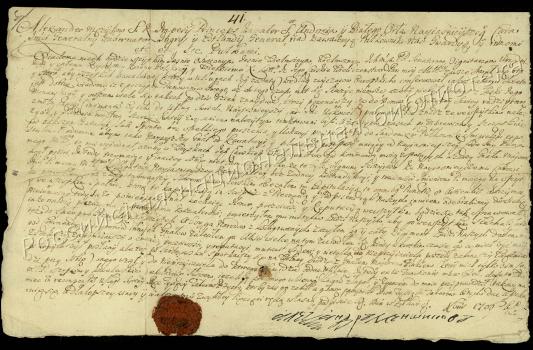
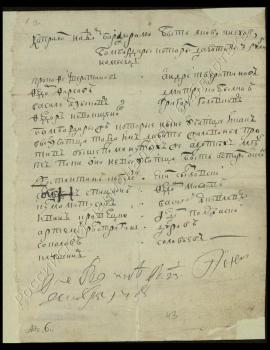
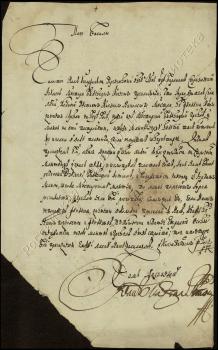
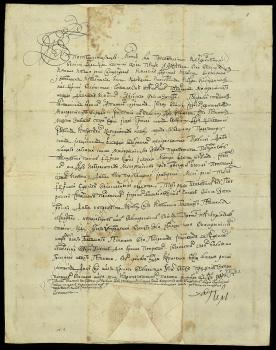

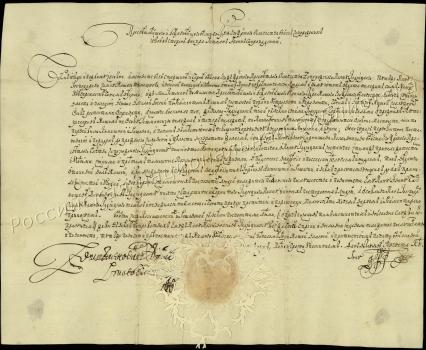
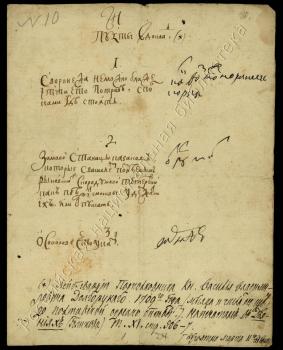
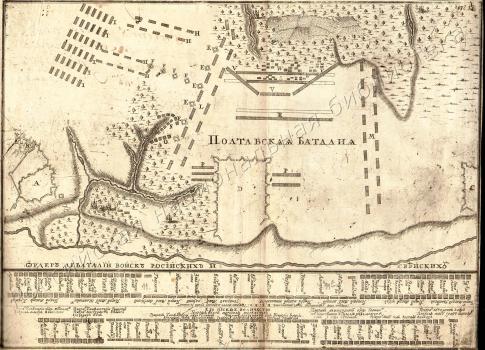
![The Battle of Poltava. Drawing [by Feodor Soimonov] after Nicolas de Larmessin´s engraving The Battle of Poltava. Drawing [by Feodor Soimonov] after Nicolas de Larmessin´s engraving](/ve/dep/artupload/ve/article/RA7791/MA95275/s_NA102896.jpg)
